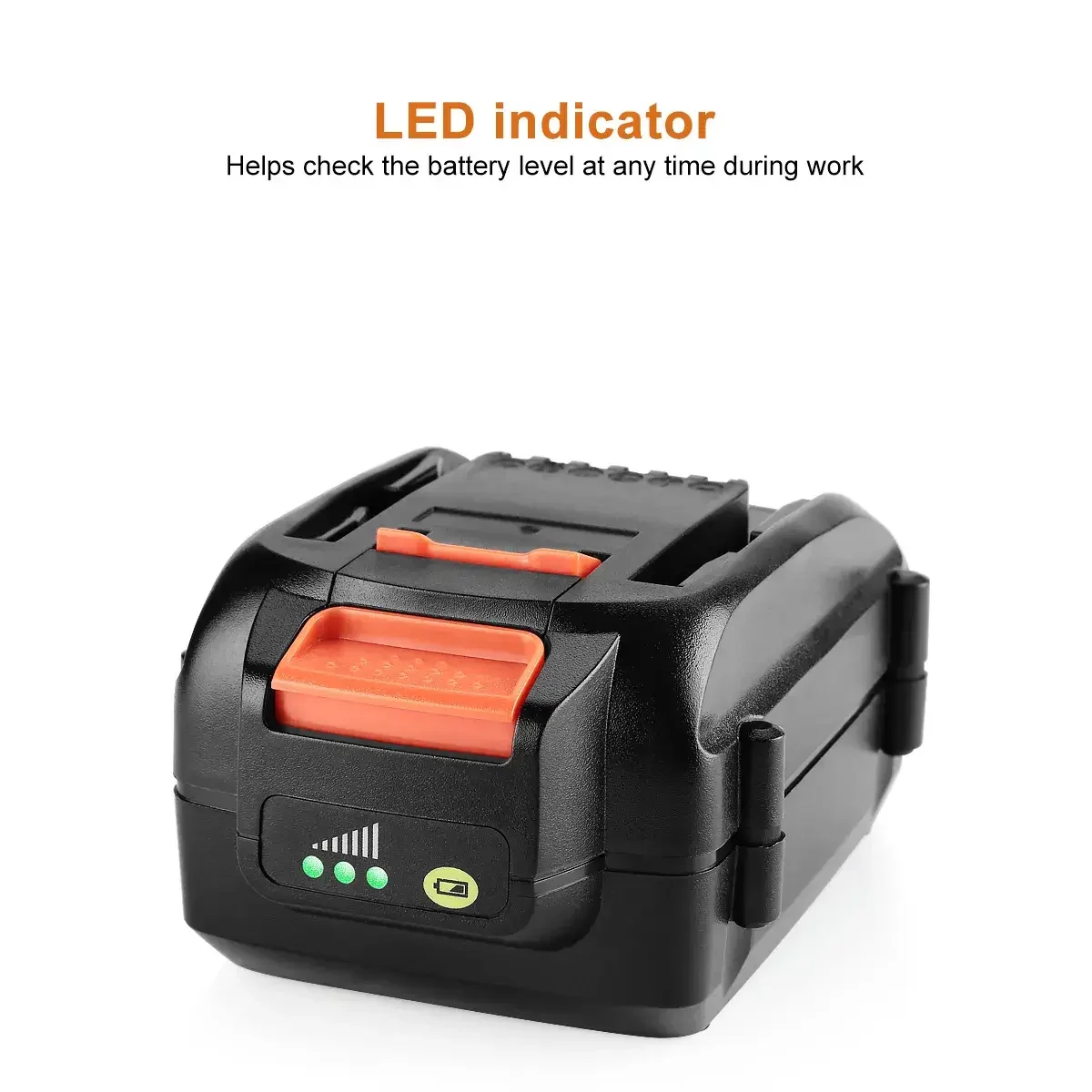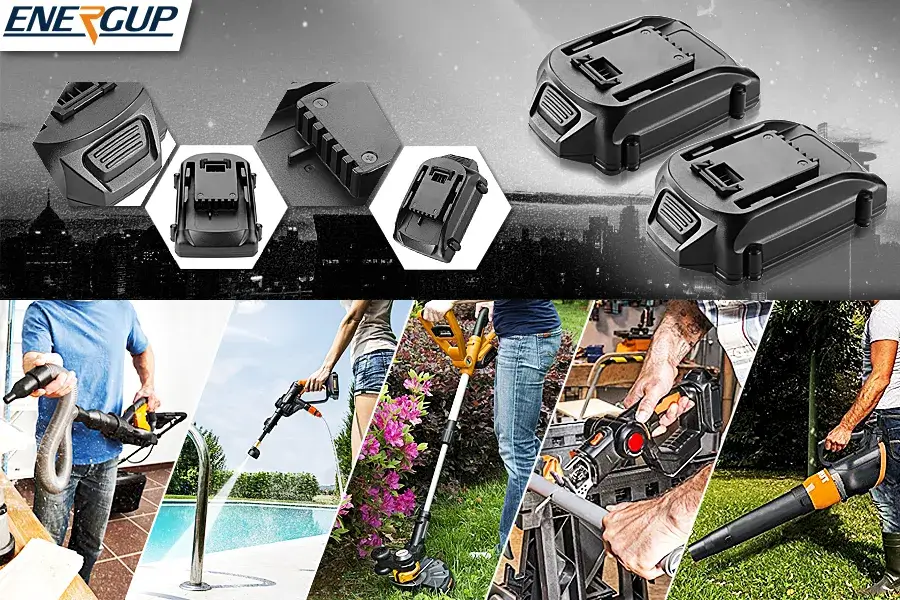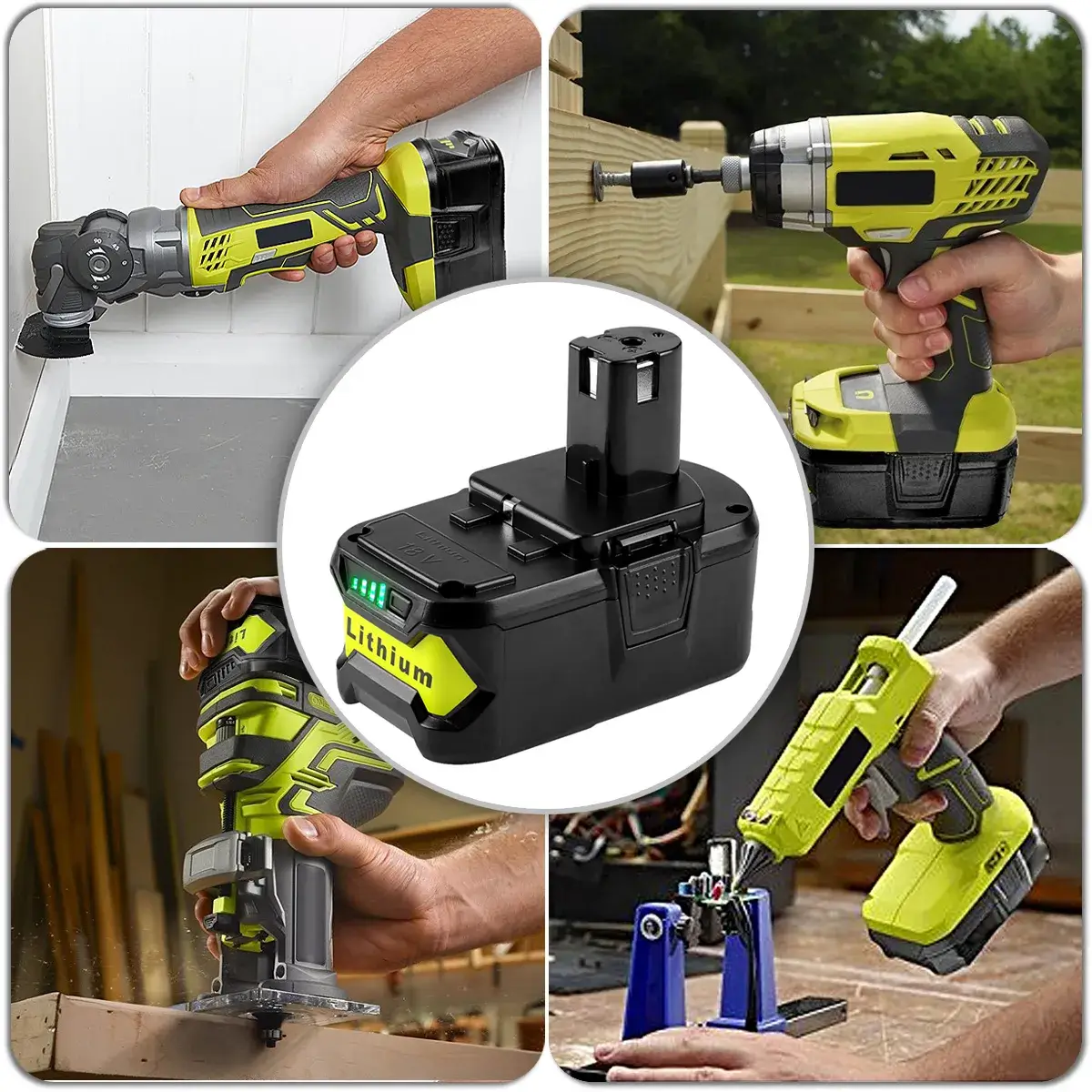Cordless Tool Battery Care Guide: Extend Lifespan & Avoid Costly Mistakes
Proper maintenance of your cordless tool batteries is essential to maximize runtime, preserve capacity, and reduce replacement costs.

Why Should You Use the Battery Regularly?
Cordless tool batteries—whether NiCd, NiMH, or Li‑ion—perform best when charged and stored properly. Always use the manufacturer’s charger, avoid full discharges, and recharge when the battery dips below 20 percent. Store cells in a cool, dry place at roughly a 40–60 percent charge to minimize capacity loss. Steer clear of extreme temperatures and remove batteries from idle tools. Regularly inspect contacts and housings, and replace worn batteries to maintain peak power and avoid surprise downtime.
Frequent discharge–recharge cycles keep cells active and prevent capacity loss from long periods of inactivity.

WOR-20V-LI Lithium-Ion Battery For Worx RW/WG/WU/WX Power Tools
Why Must You Fully Charge Your Cordless Tool Battery?
Fully charging your cordless tool battery ensures each cell reaches peak voltage and stays balanced, which maximizes overall capacity and runtime. A full charge also calibrates the battery management system’s fuel gauge, giving accurate charge‑level readings and preventing unexpected shutdowns. Leaving cells partially charged can lead to state‑of‑charge drift, capacity loss over time, and even chemical imbalances that shorten lifespan. For consistent power and longevity, always charge to the manufacturer’s recommended full voltage.
Always follow the manufacturer’s full‑charge procedure so the BMS can perform its calibration and balancing routines—this prevents state‑of‑charge drift and cell imbalance.
How Do You Keep the Battery Dry and Cool?
Store batteries in a cool, dry environment—ideally between 50 °F and 77 °F—away from direct sunlight, radiators, or heat vents. Keep them off concrete floors and use insulated shelving or plastic bins to prevent moisture wicking. Wipe contacts with a dry cloth before storage, and consider silica gel packs to absorb ambient humidity. Never leave batteries in damp garages or tool bags; a stable, low‐humidity setting preserves cell integrity and prevents corrosion.
Store and charge batteries away from moisture and heat sources. Dampness accelerates corrosion; high temperatures accelerate capacity fade.
What Is the Proper Way to Store Cordless Tool Batteries?
Store cordless tool batteries at roughly 40–60 percent charge in a cool (50–77 °F), dry location away from direct sunlight or heat sources. Remove them from tools to prevent parasitic drain, and place them on insulated shelving or in plastic bins rather than on concrete floors. Keep contacts clean and dry—wipe with a lint‑free cloth—and use silica gel packs to control humidity. Check charge levels every three months and top off to the 40–60 percent range to prevent over‑discharge.
Why Should You Have a Second Battery Available?
Having a second battery on hand ensures uninterrupted work by allowing you to swap in a fully charged pack the moment the first one runs low. This minimizes downtime—especially on critical jobs—while the depleted battery recharges. It also promotes longer battery life by cycling between cells and preventing heat buildup from continuous use. For professionals and DIYers alike, a backup battery boosts productivity, keeps projects on schedule, and reduces the risk of costly delays.
Rotate two (or more) identical packs during heavy use. This prevents overtaxing a single pack and allows each battery to rest and fully recharge between jobs.
How Can You Prevent Battery Overheating?
Prevent battery overheating by using the manufacturer’s charger and avoiding fast‑charge modes unless specified. Allow batteries to cool between heavy use—swap out packs rather than running one continuously—and never leave them in direct sunlight or near heat sources. Store and charge cells in a well‑ventilated area at room temperature, and avoid high‑amp applications that exceed the battery’s rating. Regularly inspect for damaged casings or swollen cells, and replace any compromised battery immediately.
If a pack exceeds 120 °F (49 °C) during use or charging, pause and let it cool before continuing. This avoids thermal runaway and premature capacity loss.
Why Avoid Leaving Your Battery on the Charger?
Leaving your battery on the charger after it reaches full capacity can cause chronic overcharging, generating excess heat and accelerating chemical breakdown. Prolonged trickle charging stresses cells, reducing overall capacity and shortening service life. It may also trigger safety risks such as swelling or leakage. Instead, remove the pack once charged and store it at optimal voltage (40–60 percent) to maintain balance. This practice preserves runtime, prevents damage, and ensures safer, longer‑lasting batteries.
Remove the pack as soon as charging finishes. Continuous float charging—especially on chargers without a true float profile—can generate extra heat and stress the cells.

18V Lithium Ion Battery Replacement for Ryobi ONE+ Cordless Tools P108 P192
How Do You Prevent Your Tool from Heating the Battery During Use?
Prevent tool‑induced battery heat by matching the battery’s voltage and amp‑hour rating to your tool’s requirements—using under‑ or over‑rated packs forces excess current draw. Operate at moderate speeds and avoid stall conditions; if the tool binds, back off until the load lightens. Use a properly sized bit or blade to reduce motor strain, and let the tool rest periodically during extended jobs. Keeping vents clear and swapping in a cool spare pack also maintains safe operating temperatures.
Why Must You Keep Your Tool Battery Dry?
Moisture corrodes battery contacts and terminals, leading to poor conductivity, voltage drops, and erratic performance. Water ingress can short internal cells, damaging separators and triggering dangerous thermal runaway or leakage. Damp conditions also accelerate chemical degradation, reducing capacity and cycle life. By keeping your tool battery dry—wiping off spills, storing in low‑humidity environments, and avoiding rain or wet surfaces—you preserve optimal electrical flow, prevent safety hazards, and extend overall battery lifespan.
Never use or store batteries in damp or wet environments. If contacts get wet, wipe them completely dry before use to avoid corrosion and short‑circuit risks.
FAQ: Common Questions About Cordless Tool Battery Care
Which Cordless Tool Batteries Last the Longest?
High‑quality lithium‑ion packs (2–5 Ah) with robust BMS systems and cells from reputable makers (Panasonic, Samsung, LG) typically deliver 500 + cycles.
How Can I Make My Tool Battery Last Longer?
Avoid deep discharges, keep batteries cool, remove them after full charge, and store at mid‑charge when not in use.
What Is the Lifespan of a Cordless Drill Battery?
Most drill packs last 300–500 full cycles—around 2–3 years of moderate use—before you notice significant capacity loss.
Key Takeaways & Next Steps
Disciplined charging routines, temperature and moisture control, rotating multiple packs, and avoiding over‑charging or overheating are the keys to maximizing your cordless tool battery lifespan and avoiding costly replacements. Start applying these best practices today to keep your batteries performing at their best.